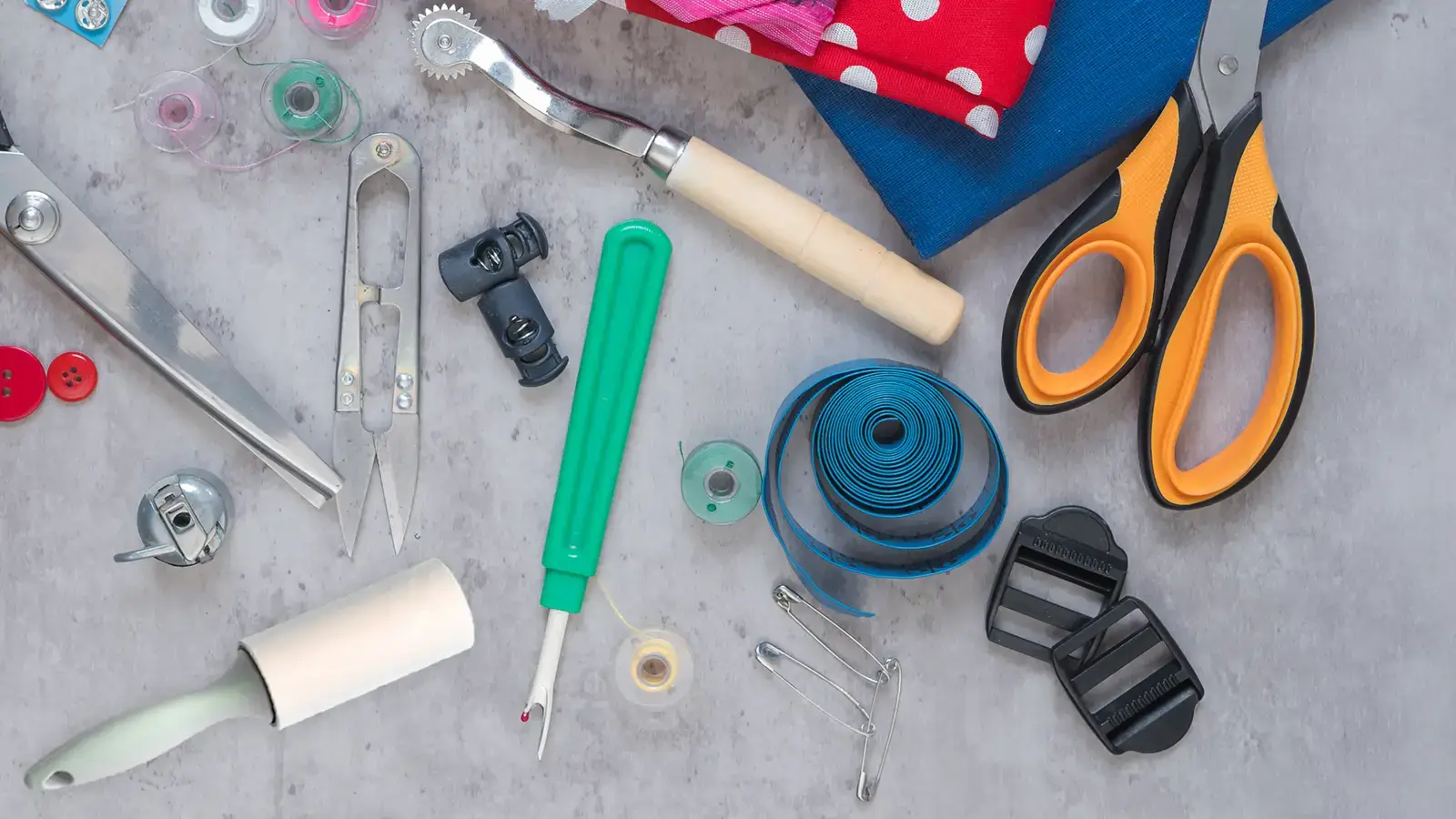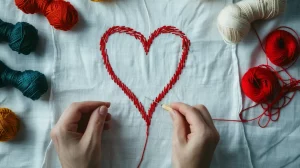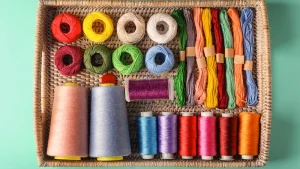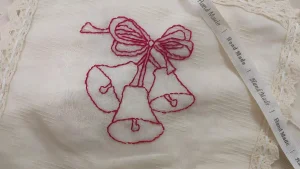Did you know that the global embroidery market is expected to reach $23.7 billion by 2025? This craft has been popular for a long time, but the punch needle technique is becoming popular with DIY fans. Both offer unique aesthetic qualities and enjoyment levels.
Embroidery necessitates precision and patience, while the punch needle offers a more forgiving and often quicker project completion. But which is the right choice for you? Stick around as we dissect the pros and cons of each, and maybe you’ll find your next passion project.
Key Takeaways
- Embroidery encompasses various techniques like hand and machine stitching. It requires precision and attention to detail.
- Punch needle embroidery creates textured, three-dimensional designs using a hollow needle to punch loops of thread into fabric.
- Different types of yarn and fabric have a big impact on the final product in embroidery and punch needle techniques.
- Embroidery and punch needles are both textile art forms. They offer different stitches and designs for artistic expression.
What is Embroidery?

Embroidery is a versatile technique in textile art. It involves creating decorative stitches on fabric to make intricate designs and patterns. This ancient practice has been embellishing textiles for centuries. It spans various cultures and continents. Embroidery offers a wide range of stitches, such as satin, chain, and French knots. It allows for plenty of creative possibilities.
Hand embroidery and machine embroidery can both add detailed designs to clothing, accessories, home decor, and art. Practice is needed to develop the skill of sewing. It can be very rewarding to watch your design come to life with each stitch. With embroidery, you’re not just creating art, you’re stitching history.
Types of Embroidery

You’ll find a variety of methods in the realm of embroidery, each distinct in technique and result. Among these are hand embroidery, machine embroidery, needlepoint, and cross stitch. Understanding the differences between these types can broaden your creativity in textile art.
Hand Embroidery
When discovering textile art, you’ll find different types of hand embroidery like crewel and cross stitch. Each with their own stitches and styles for your embroidery experience. These techniques require precision, a steady hand, and a keen eye for detail.
You’ll typically use a needle and thread. And you will often manipulate these in an embroidery hoop. Cross stitch, for example, involves counting threads in the fabric for precise placement of stitches. In crewel work, threads, often replaced with yarn, create intricate designs or patterns.
As you craft, adjusting the tension in your stitches is vital. It ensures that your finished piece reflects your skill and creativity. This personalized touch sets hand embroidery apart, allowing for truly unique creations.
Machine Embroidery
Machine embroidery uses computerized machines to create detailed designs on fabric. It is a faster and more precise alternative to hand embroidery. Your digitized designs are automatically stitched out by the machine. So it saves you time and ensures precision.
Machine embroidery is particularly popular for mass production of embroidered items, such as logos on clothing or decorative linens. Choose from a variety of stitch options and thread colors for endless possibilities of versatile and professional results.
Whether you’re a beginner or an experienced embroiderer, machine embroidery can open up a world of design possibilities. So, why not explore this modern, efficient form of embroidery today?
Needlepoint
Needlepoint is a type of embroidery. Its intricate designs are stitched onto canvas fabric using different stitches. This traditional embroidery technique hails from Ancient Egypt. It allows for the creation of different patterns on canvas. By mastering different stitching techniques, you can craft stunning decorative items like pillows and wall hangings.
Essential tools for needlepoint include canvas, tapestry needles, threads, scissors, and a frame. Needlepoint stands out in the textile art world for its durability and the wide range of creative possibilities it offers. It’s a skill that once honed can elevate your embroidery work to new artistic heights.
Cross Stitch
Cross stitch is an embroidery technique. When you start cross stitch, you’ll make designs on linen by creating X-shaped stitches that go from one hole to the next on the fabric. This technique is very versatile. It offers a wide variety of patterns from simple to complex. You’ll be amazed at how the stitches come together to form intricate designs, enhancing the beauty of the fabric.
The range of thread colors and textures used in cross-stitch further adds to its appeal. Embroidery is an art form that allows people to express their creativity. It helps create beautiful decorative items like framed pictures and samplers. Truly, cross stitch offers endless creative possibilities.
What is Punch Needle Embroidery?

Punch needle embroidery is a textile art technique that uses loops of yarn or thread to create textured designs on fabric.
This method employs a hollow needle, pushing it through the fabric to form a loop on the other side. The process is repeated to generate a texture that’s plush and three-dimensional. Originating from ancient Asia, it’s evolved, showcasing variations in materials and styles.
Punch needle embroidery provides a unique tactile experience, differing from traditional embroidery techniques. Various punch needles are utilized to regulate distinct volumes and stitch dimensions. This technique is an accessible entry point into textile art. It offers a visually rich and tactile form of expression.
Punch Needle Tools

Let’s explore the tools you’ll need for punch needle embroidery. The most important things you need are the punch needle, the fabric, and an embroidery hoop or frame. You’ll also need yarn for your designs. And there are additional materials that can enhance your punch needle experience.
Punch Needle
In the world of punch needle, the tools are designed with a metal-tipped needle that has a hole and a channel. This makes it easy to thread yarn or thread. The punch needle tools come in various sizes to accommodate different thicknesses of yarn or embroidery floss. An ergonomic handle allows for effortless navigation across your selected material while working on punch needle creations. With these tools, you can create textured designs, making punch needle a unique and enjoyable approach to textile art.
Foundation Fabric
Selecting the right base material is essential for successful punch needle projects. Monks cloth, linen, and burlap are popular choices because of their unique characteristics.
Monks cloth is loved for its durability and suitability for creating textured designs. Its tightly woven threads ensure your loops stay intact.
Linen is smooth and works well for punch needle work, allowing for detailed and precise stitching.
If you’re aiming for a rustic aesthetic, burlap’s coarse texture might be your best choice. Each of these fabrics brings a unique look and feel to your finished pieces.
Embroidery Hoop or Frame
Using an embroidery hoop in punch needle embroidery helps keep the fabric tight. A hoop or frame ensures that your workspace remains visible at all times. It also enables you to achieve consistent loop lengths. You can opt for a frame with carpet tacks or gripper strips. It can provide superior hold and stability during punching. If using a wooden frame, you’ll find a staple gun invaluable for attaching your fabric.
Yarn
Choosing the right yarn is crucial for achieving exceptional results in punch needle projects. It can be embroidery floss, wool tapestry yarn, or bulky yarn. It affects the final product. The texture and thickness of your yarn determine the plushness and visual appeal of your design.
Pushing yarn from the back of your needle creates unique loops on the fabric surface. Different yarn thicknesses offer versatility in texture and design. For instance, using bulky yarn will create a more plush effect, enhancing the tactile experience. Conversely, embroidery floss or wool tapestry yarn offers a finer finish.
Incorporating a variety of yarn colors further enhances the detailing in your punch needle designs. So, choose your yarn wisely.
Other Materials
Equipping yourself with the right punch needle tools can impact the quality of your textile artwork. The choice of fabric is of utmost importance. Common fabric choices are monks cloth, linen, and burlap. These fabrics work the best due to their loose weave. It allows the punch needle to easily penetrate and create loops.
The types of threads you use also matter. You can use embroidery floss, wool tapestry yarn, or even bulky yarn, depending on the desired effect. The handles on punch needle tools are designed for easy gripping, giving you greater control as you work. Choosing the right punch needle tools and materials enhances your artwork and your overall crafting experience.
How to Choose Different Types of Embroidery?
Choosing the right embroidery depends on the texture, project complexity, fabric type, desired stitches, and feel you want.
Choose needle punching for a soft and textured touch. This method produces thread loops on evenweave materials like monk’s cloth. This technique is perfect for simpler, faster embroidery projects.
If you enjoy intricate designs on fabrics like linen, traditional embroidery is the best choice. Traditional embroidery offers many stitch options for a classic, elegant finish to your work.
Conclusion
So, are you team embroidery or team punch needle? Embroidery and punch needle are both artistic activities that provide a satisfying creative outlet. It’s about finding what resonates with you.
Remember, there’s no rush – take your time to explore, experiment, and above all, enjoy the process. After all, the journey is as important as the destination in the world of textile art. Now pick your punch needle kits and start your works of art.
Happy stitching!



